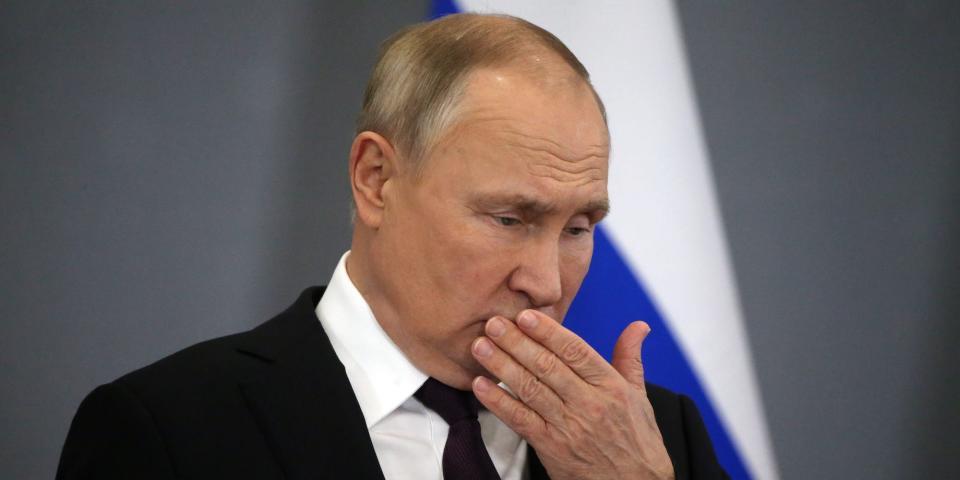Russia's ruble has crashed 20% as Ukraine war costs pile up and energy revenue sinks

Russia's currency is trading at 75 rubles per US dollar, the lowest it has been in 10 months.
The 20% depreciation since December comes amid falling energy revenues and higher government spending.
Russia has been selling its reserves of Chinese yuan to help close budget deficits.
Amid a costly war and collapsing energy revenue, the Russian ruble has sunk 20% since December to its lowest in 10 months.
The currency is trading at 75 rubles against the US dollar, down from its peak of 50 in late July and near levels seen before President Vladimir Putin launched the full-scale invasion of Ukraine last February.
The ruble is still above the low of 140 in the immediate aftermath of the invasion as Western sanctions largely cut off Russia from the global financial system.
While the Russian central bank's steep rate hikes and capital controls have helped prop up the ruble since then, new sanctions that began in December targeting the Kremlin's energy revenue are weighing on the currency.
Russia's oil and gas revenue plunged nearly 40% in January, the International Energy Agency said. Despite rerouting energy exports toward other markets like China and India, those sales are coming with steep discounts.
Meanwhile, government spending is soaring. Russia announced a 2023 defense budget of about $84 billion, a hike of more than 40% compared to its initial projection announced in 2021.
And by the end of last month, Russia had already spent 17% of its 2023 budget but received just 5.3% of its expected revenue, according to finance ministry data cited by the Financial Times.
The deficits have forced the Kremlin to tap its stockpile of foreign currency, now mostly made up of Chinese yuan, to close the gaps.
Russia sold 54.5 billion rubles worth of yuan in January and planned to triple that amount in February to 160.2 billion rubles.
Read the original article on Business Insider
